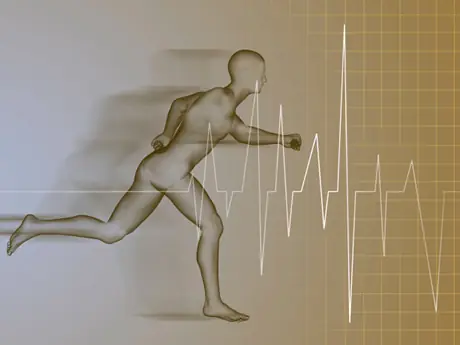
Evolutionary history suggests that it's in our nature to run long distances. Fossil evidence implies that humans' ability to run long distances was developed nearly 2 million years ago, when we turned from primates into humans, according to the Evolution of Marathon Running.
As running has evolved from a necessity—run from predators or to chase food—to a well-known sport, it's worth asking: What happens to your body when you run long distances? Better yet, what happens when people run an ultramarathon, which is any distance that surpasses the 26.2-mile mark? Here's the science behind what some may call the insanity.
More: 6 Fun Facts About Ultrarunning
Training for an Ultramarathon
Ultrarunners are preparing their bodies for a much different task than those training for a race 26.2 miles and less. In fact, for ultrarunners, a marathon-distance run is just another afternoon of training.
"Ideally, you'll run at least several 20s and several 24- to 26-milers before your first 50 [mile race]. Even better, you'll run at least one 30-mile walk/run. Many ultrarunners do at least two 30-milers per month, and some do a 30 every weekend," says George Beinhorn, author of Fitness Intuition.
These runners aren't just running 30 miles a weekend because of the joy it brings them. It's a necessity in training. "There has to be more emphasis on longer efforts to train your body metabolically," says Matt Hart, blogger, running coach for Coaching Endurance and competitive ultramarathon runner. Metabolic training is critical in an ultramarathon because it dictates when your body uses fat versus carbs for fuel.
More: 7 Experts on Effective Long-Run Training
"The faster your pace or the more intense your workouts, the more you rely on carbohydrates for energy. And as you slow your pace or your intensity, you can 'switch' so to speak, to using fat for fuel," says Jennifer Gill, an RRCA-certified running coach. Your body needs to use both energy stores during distance running, and training it to do so requires fueling with carbohydrates at just the right times during the run.
During these training runs, your body experiences a number of physical changes:
- Glycogen depletion: Ultrarunners burn 400 to 600 calories per hour, according to Christie Aschwanden of Runner's World, which leads to extreme glycogen depletion.
- Joint pain: The average ultrarunner lands on his or her feet nearly 5,000 times an hour, says Dave Hannaford, DPM. "Studies find that the normal runner lands about 90 strides per minute, but my experience with ultrarunning reveals a slower average because of walking and fatigue," he says. Because of this, join pain is exacerbated for ultrarunners, an extreme that some marathoners may never experience.
- Soreness: Ultrarunners runners experience an extreme form of DOMS (delayed onset muscle soreness) thanks to hours of eccentric contractions—leg muscles lengthen under high impact while they try to shorten or contract. This can affect even professional distance runners after intense conditioning and training, and cause intense knee, hip and feet pain.
These nuances of long-distance runs prepare ultrarunners for more significant physiological challenges come race day.
- 1
- of
- 3
About the Author

Get ACTIVE on the Go


Couch to 5K®
The best way to get new runners off the couch and across the finish line of their first 5K.
Available for iOS | Android







Discuss This Article